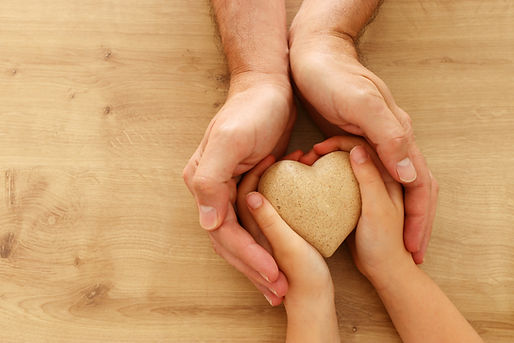4 ways to fight child trafficking today
- Elisha Horrocks
- Aug 19, 2020
- 4 min read
Let’s talk about child trafficking.
I mean, we already are–unless you’ve been living under a rock for the past month–but let’s talk about it some more.
First of all, I’m happy to say that everyone but the lowest of the low agrees that child trafficking is BAD. Real bad. It’s a part of a much larger problem that is human trafficking. Over half of all United States human trafficking cases involve only children, and roughly 300,000 children are at risk for trafficking every year.
However, I think a lot of us have misconceptions of what it looks like. It’s not always a shifty-looking dude ushering a disheveled, terrified little girl to the next disgusting buyer in the dead of night, or keeping her imprisoned in the basement between “meetings.” In reality, two-thirds of known child trafficking victims have been trafficked by their own family. And while some victims are definitely kept by force, most are manipulated through other means. Save the Children states:
Trafficking can involve force, but people can also be trafficked through threats, coercion, or deception. People in trafficking situations can be controlled through drug addiction, violent relationships, manipulation, lack of financial independence, or isolation from family or friends, in addition to physical restraint or harm.
Beyond the terrible violation that these children experience, they often aren’t treated with violence. They’re conditioned with fake kindness and rewarded for “performing.” Side note, that really messes up their understanding of consent and how loving relationships should work. But I digress.
The actual act of trafficking a child is also extremely inconspicuous–shockingly so. Melanie Cholish tells her story about being trafficked from the age of 5 until she was a teenager, and she shares the following:
How many vacations we went on where I was left for a minute at the pool, until a man came and I left with him for a while. Airports where I was passed over to another man in a crowd, looking like any girl going from her dad or uncle to her dad or uncle. Again, a public drop and nothing suspicious. Most children trafficked in the US are so conditioned they don’t know anything else. It’s their normal. I think back as an adult and think, “Why didn’t I scream out for help? Make a scene?” But I had to forgive my inner child. There was no reason I knew to scream out for help. I wasn’t in danger; this was just my normal life.
It’s chilling how easily this kind of thing could happen right under our noses. We at the Third District Guardian ad Litem Program are especially concerned, considering a large amount of trafficking victims were in the Foster Care system at one point. These are vulnerable children, and they are everywhere! If this makes you as concerned as I am, here are four things you can to today to help these destitute children:
Educate yourself. Operation Underground Rescue is a proven advocate against child trafficking, and they have rescued over 4,000 children from trafficking all over the world. They have a free anti-child trafficking training course. It takes very little time, and you never know when your training could make all the difference.
Maintain a conversation with your children. To keep your children from being targeted, it’s important that you teach them the correct biological terms for their genitalia. Tell them about where they cannot to be touched, and what to do if someone threatens or violates them. You don’t need to scare them with the graphic, brutal reality of what child trafficking is. Just keep the children in your sphere of influence safe from becoming victims themselves. And, most importantly, believe children when they tell you something has happened.
Back projects that make a difference. Along with Operation Underground Rescue, several other organizations are taking a significant stand against child trafficking (see the second section in the referenced link). It’s worth noting here that, when you donate to the Third District Guardian Ad Litem Program, your dollars go directly to helping children who are extremely vulnerable to being trafficked. Research which organizations make a difference, and support them with your money. You may not be able to give a lot, but a lot of people donating a little makes a huge difference in the end.
Volunteer. Become a Guardian Ad Litem (GAL) or a Court Appointed Special Advocate (CASA) to help foster children–who, as I’ve mentioned, are VERY vulnerable to trafficking. Or, if spending 5-8 hours a month serving the best interests of a sibling group in Foster Care doesn’t appeal to you, there are tons of other volunteer opportunities! Advocates Against Family Violence is another local nonprofit that aims to eliminate domestic abuse (and sexual exploitation is definitely a form of abuse), as is the Nampa Family Justice Center. All of the above organizations are always accepting donations as well, and they make excellent use of any money and in-kind donations gifted to them.
Speaking candidly, child trafficking is a horrific problem, and sharing memes to create awareness is just not enough. Let’s take advantage of this social media movement, take action, and encourage our peers to take action as well. The world definitely stinks right now, but taking action today will make the world stink a lot less tomorrow.







Comments